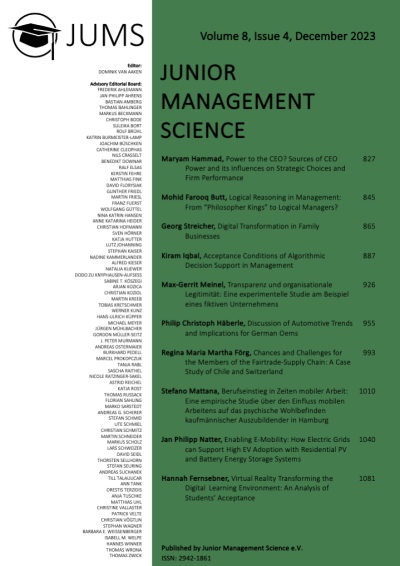Abstract
Virtual reality (VR) is gaining prominence in post-secondary education. In fields such as medicine or engineering education, VR is widespread and enhances educational opportunities. The technologies’ popularity is, however, swapping over to more theoretical fields of study. Institutions, therefore, need to understand what factors influence the decision of post-secondary students to accept immersive VR applications in non-practical lectures. The Unified Theory of Acceptance and Use of Technology 2 (UTAUT2) provides a theoretical framework for technology acceptance research. While most previous studies have taken a quantitative approach, this study adopts a qualitative method to deliver profound insights into the students’ perspectives on VR acceptance. Based on a thematic analysis of focus group interviews, the study extends UTAUT2 by adding two core constructs and additionally identifying upstream factors influencing all core constructs of UTAUT2. The results indicate that the original UTAUT2 is too superficial to capture the underlying influences on students’ VR acceptance. Thereby, my study contributes to current VR acceptance research by providing a context-specific UTAUT2 model that may guide decision-makers in successfully implementing VR in post-secondary education.
Keywords: Virtual reality; Technology acceptance; UTAUT2; Post-secondary education.

This work is licensed under a Creative Commons Attribution 4.0 International License.
Copyright (c) 2023 Hannah Fernsebner

